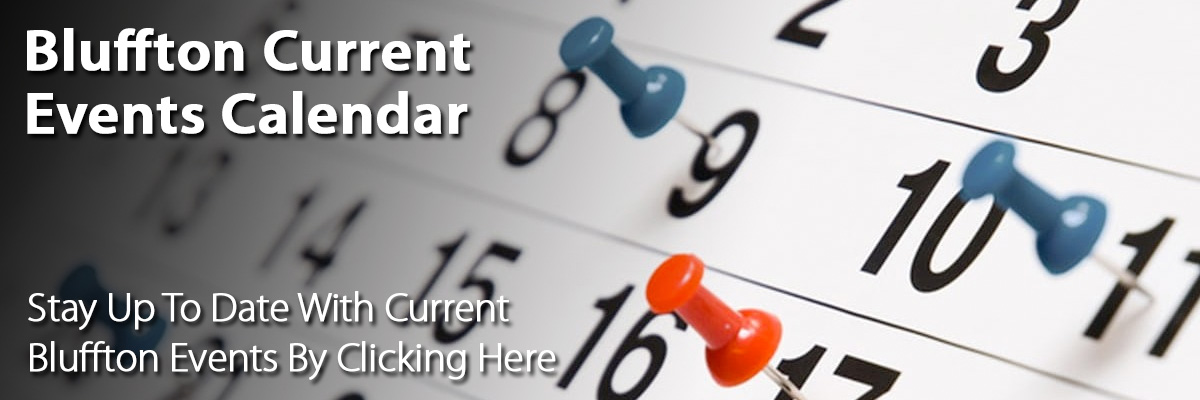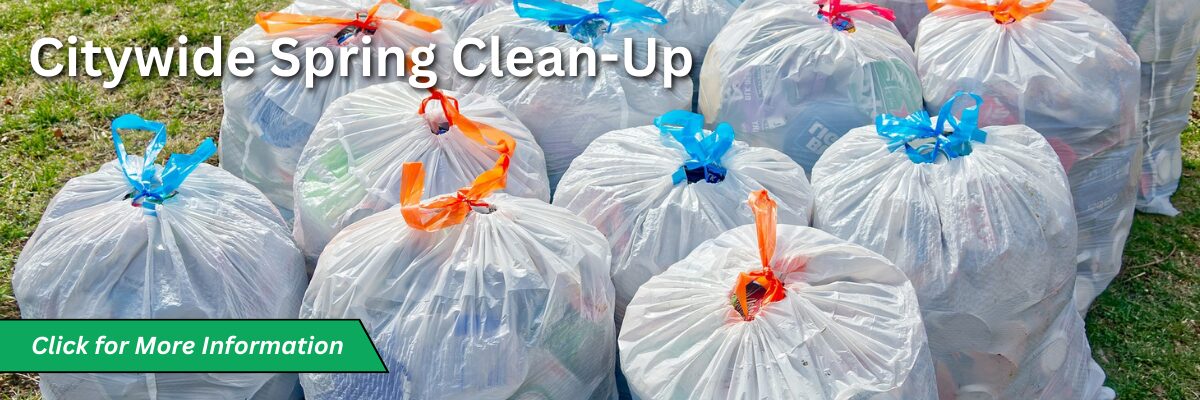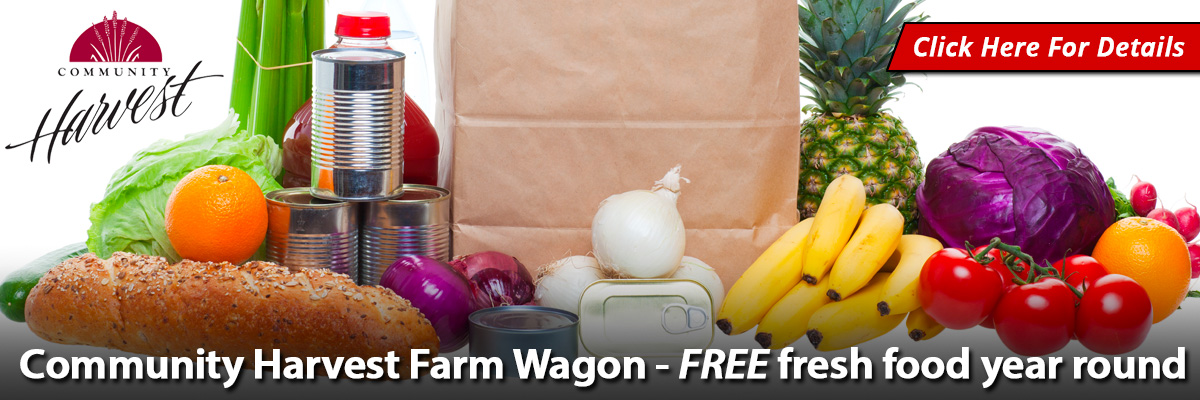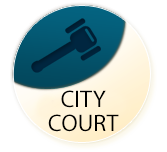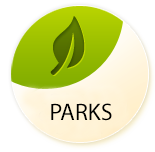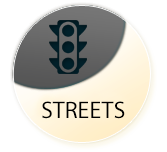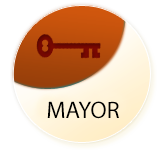Upper Wabash River Basin
We are stewards of this native habitat waterway, yet enter as guests into someone else’s home. This is a “sanctuary” for native plants & critters to call “home”.
From 2002 to 2009, the City of Bluffton reforested 150 acres of floodplain with species of this area’s former Oak-Hickory and Maple-Beech forest habitats. This acreage is located on the north side of the Wabash River west of the White Bridge and represents another addition to the City of Bluffton’s ongoing efforts to restore the Wabash River floodplain to its native habitat waterway.
A system of looping trails allows people to walk among the emerging native bushes and trees and enjoy the tranquility of the young woods and the delight of hearing and seeing birds and animals who are calling the area home.
A Native Habitat Waterway utilizes one of Nature’s remarkable engineering features – the floodplain. The floodplain is without question the most efficient and cost effective way (1) to manage flooding and (2) to inhibit and prevent erosion. Restoring the floodplain of the Wabash River to a native habitat waterway ensures virtually 100% flood control.
Stewardship of a Native Habitat Waterway is far less costly than the constant maintenance and care required by ditches, levies, and other man-made flood control mechanisms and drainage devices. It requires less taxpayer money, less government, and more community involvement.
Benefits of the City of Bluffton’s ongoing efforts to restore the Wabash River floodplain to its native habitat waterway include:
- superior flood control by utilizing the river’s natural floodplain
- better drainage for tributaries and farm field tiles
- better water quality by diminishing runoff laden with sediment and chemicals from farm and lawn applications
- enhanced quality of life and property values for citizens of Bluffton and the surrounding area
- a renewable resource that can be sustained to benefit and pass on to each new generation
A native habitat is a community of plants that have evolved together and have a relationship that is very different than the squatters-like relationship of invasive plants or pioneering plants. In a native habitat, like in any community, species find their niche. Thickets are by products of invasive plants and pioneering plants rushing into disturbed areas, a plant version of a free-for-all – like a human gold rush.
It will take a generation or two before this native habitat waterway matures beyond its youthful upstart stage. Creating a Native Habitat Corridor along the Wabash River is what building a cathedral in Europe used to be – a project from generation to generation.
My grandfather worked on this cathedral.
My father worked on this cathedral.
Now I am working on this cathedral and my son will likewise.
A couple of generations have built the initial places of restored native habitat waterway. We are currently building more.
It is our vision that someday future generations can walk along the Wabash River and once again see the river’s white limestone bed and live with trees that are too big to hug and that tantalize the human imagination.
WHEN WHAT WAS PLANTED
From 2002 to 2009, the City reforested 150 acres of Wabash River floodplain with species of this area’s former Oak-Hickory and Maple-Beech forest habitats. Almost all of the seedlings were purchased from the Indiana Department of Natural Resources Nursery Program. IDNR filled tree orders via a lottery system; thus availability of species varied from year to year.
Prior to 2009, Red and Sugar maples and American beech weren’t available through the DNR, so the City purchased these species from JF New company of Walkerton, IN. JF New planted all the seedlings from 2002 to 2009 on a 10-foot by 10-foot grid or 440 seedlings/acre. Green ash were planted extensively prior to the arrival of the emerald ash borer in Indiana, which was confirmed in 2004. Silver maples, Eastern cottonwoods, and Green ash have been propagating themselves in ample numbers. Eastern red cedar, American Elm, and various crabapples have come in on their own initiative along with the thorn clad Honey locust and the non-native Russian olive.
For ground cover, a seed mixture of native grasses and a smattering of wildflowers with annual rye grass was sown by Jack Wenger prior to the planting of the seedlings. The native grasses consisted of Little bluestem, Big bluestem, and Switchgrass. Isch Seeds provided assistance in determining and securing the appropriate mix of these seeds.
Deliberately planting a variety of native trees and bushes a few acres each Spring over an 8-year period will help ensure some diversity as this young native habitat re-establishes itself.
The slate shingles used for tree IDs were donated by Fort Wayne Roofing. Signs at the trailheads were funded by a grant from the Wells County Foundation and private donations and were placed in 2012.
(See accompanying maps for location of Phases.)
Map of Phases 1-6
Map Of Phase 7 & 8
PHASE 1 – 2002 (Reforest about 30 acres)
2200 Green Ash
2200 Pin Oak
100 Redbud
400 Shellbark Hickory
2200 Silky Dogwood
2200 Silver Maple
2200 Swamp White Oak
2200 Sycamore
—————————-
13,700 total seedlings
PHASE 2 – 2003 (Reforest about 15 acres)
1000 Black Cherry
800 Bur Oak
400 Chinkapin Oak
800 Green Ash
400 Redbud
400 Shagbark Hickory
100 Shellbark Hickory
800 Silver Maple
800 White Oak
200 Ninebark
200 Spicebush
—————————-
5900 total seedlings
PHASE 3 – 2004 (Reforest about 15 acres)
400 Black Cherry
800 Bur Oak
800 Green Ash
400 Kentucky Coffee Tree
200 Pin Oak
500 Redbud
200 Shagbark Hickory
800 Silver Maple
800 Swamp White Oak
600 Tulip Tree
200 Ninebark
200 Spicebush
—————————-
5900 total seedlings
(2012)
50 Red Maple
50 Sugar Maple
PHASE 4 – 2005 (Reforest about 15 acres)
400 Black Cherry
800 Bur Oak
200 Green Ash
600 Redbud
800 Shagbark Hickory
800 Silver Maple
600 Swamp White Oak
400 Sweetgum
800 Sycamore
600 Tulip Tree
400 Elderberry
200 Ninebark
—————————-
6600 total seedlings
PHASE 5 – 2006 (Reforest about 15 acres)
400 Black Cherry
400 Black Oak
600 Black Walnut
400 Bur Oak
300 Kentucky Coffee Tree
200 Red Maple (JF New)
600 Redbud
200 Sugar Maple (JF New)
300 Sweetgum
800 Sycamore
800 Tulip Tree
400 White Oak
200 Common Chokeberry
200 Elderberry
200 Ninebark
6 Woodland Packets (10 each of Bald Cypress, Black Cherry Black Gum, Black Oak, Bur Oak, Flowering Dogwood, Kentucky Coffee Tree, Red Oak, Shellbark Hickory, Shumard Oak, Tulip Tree, White Oak, White Pine)
—————————-
6780 total seedlings
PHASE 6 – 2007 (Reforest about 15 acres – 20 acres minus 120-foot wide easements for Panhandle gas mains & east side of Paxson Creek)
200 American Plum
300 Black Cherry
300 Black Gum
200 Black Walnut
400 Bur Oak
200 Green Ash
300 Pin Oak
200 Red Maple (JF New)
400 Redbud
400 River Birch
600 Shagbark Hickory
200 Sugar Maple (JF New)
300 Swamp Oak
300 Sweetgum
500 Tulip Tree
200 Flowering Dogwood
200 Gray Dogwood
200 Silky Dogwood
200 Buttonbush
400 Common Chokecherry
200 Elderberry
200 Ninebark
3 Woodland Packets (10 each of Bald Cypress, Black Cherry Black Gum, Black Oak, Bur Oak, Flowering Dogwood, Kentucky Coffee Tree, Red Oak, Shumard Oak, Tulip Tree, White Oak, White Pine)
—————————-
6760 total seedlings
PHASE 7 – 2008 (Reforest 10+ acres)
200 Black Cherry
200 Black Gum
100 Black Walnut
100 Bur Oak
400 Flowering Dogwood
200 Red Maple (JF New)
300 Redbud
200 River Birch
100 Shagbark Hickory
100 Shellbark Hickory
200 Sugar Maple (JF New)
200 Swamp Oak
200 Sweetgum
200 Sycamore
200 Tulip Tree
100 Black Chokeberry
200 Buttonbush
2 Woodland Packets (10 each of Shagbark Hickory, Black Cherry, Black Gum, Black Oak, Bur Oak, Kentucky Coffee Tree, Red Oak, Shumard Oak, Tulip Tree, White Oak, White Pine, Pin Oak)
2 Wildlife Packets (10 each of American Plum, Silky Dogwood, Common Chokeberry, Elderberry, Hazelnut, Gray Dogwood, Pawpaw, Persimmon, Shagbark Hickory, Black Cherry, Washington Hawthorn, White Pine)
—————————-
3700 total seedlings
PHASE 8 – 2009 (Reforest 10± acres)
100 American Beech (JF New)
100 American Plum
200 Black Cherry
200 Black Gum
100 Black Walnut
100 Bur Oak
200 Red Maple
200 Redbud
200 River Birch
100 Shagbark Hickory
100 Shellbark Hickory
100 Sugar Maple (JF New)
200 Swamp Oak
200 Sweetgum
200 Sycamore
200 Tulip Tree
200 Flowering Dogwood
200 Gray Dogwood
200 Silky Dogwood
100 Black Chokeberry
200 Buttonbush
100 Common Chokecherry
400 Ninebark
—————————-
3900 total seedlings
In the mid-1800s, new settlers carved the community of Bluffton out of what many considered an exotic wilderness.
The upper Wabash River basin was home to a mature old growth forest. This habitat, according to accounts recorded by the early white settlers, was dominated by hickory, sugar maple, and white, bur, and black oaks along with ash, basswood, beech, white elm, sweet gum, yellow popular (tulip), and walnut. Folks encountered trees up to and over 6 feet in diameter.
Beneath this forest community lay the fertile clays and silt loams for future agricultural production. And these soils, rather than the forest, would sustain the wave of new humans to the area.
Someone born in the 1830s and living into the early 1900s could have witnessed the clearing of this old growth forest, the “tall timber” as it often was called.
Yet by the late 1800s, people already were trying to replant what had been cleared.
In 1871, a large subdivision of 256 residential lots was carved out of the forest of tall timber on the southeast end of Bluffton. But two one-block squares, Washington Park in 1875 and Jefferson Park in 1887, were dedicated to the City of Bluffton. Each was “to be used as a public park or pleasure grounds” with the stipulation that the grounds were “liberally supplied” or “planted” with forest or shade trees.
In 1902, Charles Deam purchased from his Uncle Frank Deam a 5-acre farm field at the corner of River Road and Wayne Street and proceeded to plant what some townfolks called Charlie’s Jungle. By the 1940s, Deam had transformed that corn field into his vision of an arboretum of mature trees native to Indiana and from other regions of the world.
In the early 1930s, the State acquired some 1000 plus acres of rolling, eroded farm land east of Bluffton and began reforesting the Wells County State Forest and Game Preserve. As the State changed the land’s purpose from a plantation for harvesting pines and a preserve for reproducing game animals to a recreation area to one of the State’s busiest parks, native trees kept returning and growing.
Although the State may not have envisioned recreating a native habitat, in less than 30 years, Ouabache State Park had become a haven for the early stages of a habitat struggling to reestablish itself. In 2002, the City of Bluffton began reforesting 115 acres of floodplain farmland. The City had purchased the land in 2000 to resolve pending action for an unavoidable violation by the Wastewater Treatment Plant for discharging overwhelming inflow from a storm event. An adjacent 32 acres would be purchased and added in 2006.
VOLUNTEER: If you wish to volunteer for stewardship of these lands, please contact the Mayor’s Office at 260-824-1520.
DONATIONS: Monetary donations can be made to a Native Habitat Waterway Fund as established and maintained by the City of Bluffton Clerk-Treasurer. Monies shall be spent
- to buy more floodplain land or adjacent land to the existing City owned floodplain land so to expand the native habitat waterway,
- to extend the River Greenway or other trails that utilize the Wabash River flood plain or adjacent lands, and
to install along said trails appropriate signage and outdoor sculptures, such as the existing chain-saw wood carvings along the River Greenway or the iron sculpture at the Creative Arts and Chamber of Commerce Center.
WHY RECLAIM THE WABASH RIVER FLOODPLAIN
by Doug Sundling
A lot of folks call the nearby Ouabache State Park their “backyard.” That “backyard” now extends to Bluffton along an asphalt River Greenway on the south side of the river and through 150 acres of reforested farmland that is in the floodplain on the north side of the river and west of White Bridge. Is it possible to continue extending that “backyard” to the Old Bluffton Cemetery? To Murray? To the Huntington Reservoir? To Vera Cruz? To Geneva? What connects all these places is the Wabash River and its floodplain.
Up to maybe the late 1800s, people could have enjoyed eating not only by but also from the Wabash River. They drank its water and ate its fish and shellfish.
The river was the main artery of life for this part of America’s heartland. The river and its watershed basin provided the life blood for the native habitat of oak-hickory and maple-beech forests. And these provided a home for an abundance of wildlife and marine life. And all of this allowed the Miami Indians to call this area home for generations.
Then the Wabash River became a drainage system for the farmlands created by a new wave of humans from the eastern states of America. Eventually, as human population grew to unprecedented numbers, towns and cities and other development came to use the river more as a drainage system than as a source of clean water and food.
Having learned or retained little of the former inhabitant’s knowledge of the Wabash River, the new settlers of the 1800s would leave legacy of two major problems which continue to challenge us today:
- there was little if any consideration of the river’s recurring rhythm of flooding;
- there was no consideration of the consequences of eroding soil, nutrients, and farm and lawn chemicals into the water.
Yet over the past few decades our relationship with the Wabash River has been changing. A canoe trip beginning in Geneva and drifting through Bluffton and to the Huntington Reservoir takes you through these changes. What is emerging is an emerald necklace of open green spaces, a necklace that is strung together by the Wabash River. We, who call the upper Wabash River basin “home,” have an opportunity to connect these areas – these extra backyards of open green space – and create a legacy we can pass on from generation to generation, to create a Native Habitat Waterway from the Huntington Reservoir upstream to the state line. This covers some 25 river miles of the Upper Wabash River Basin.
Without water, we don’t exist, and yet we take the Wabash River for granted. We take for granted the Wabash River is brown, and folks debate what are acceptable levels of pollution. The last time folks were able to see the white limestone river bottom was some two or more generations ago.
Generations ago, the Wabash River flowed through this area. Generations henceforth, the Wabash River no doubt shall continue to flow through this area. Unlike any of our human endeavors to make this place our home, the Wabash River shall endure from generation to generation.
Hello, my name is Audry Estill and I am a senior Girl Scout of Bluffton Indiana. When I stumbled upon the wetlands-reforestation trails I was oblivious of its importance to our community. My Girl Scout troop leader explained a little bit of its background but I wanted to learn more. This is how I met Doug Sundling, the caretaker and overseer of the project. He has been my mentor on my journey to reach the highest award in Girl Scouts known as the Gold Award. To achieve this award I must work many hours in service of my community that will have a lasting effect. My goal for this project was to gain publicity, awareness for the importance of the area, place industrial signs and tree markers along the trail and establish a website. With the help of many in the community my project is, in my opinion, a success. I would like to thank those that have showed interest either in funding, by word of mouth and/or participation. My hope is that the people who value our history and the development of a better environment will continue to nurture this project and help it grow. Our community is great because of people like you. =)
Submit your comments or experiences about the reforested wetlands area or the City’s ongoing efforts to create a native habitat waterway.
E-mail to Brenda Jackson, Brenda Jackson

